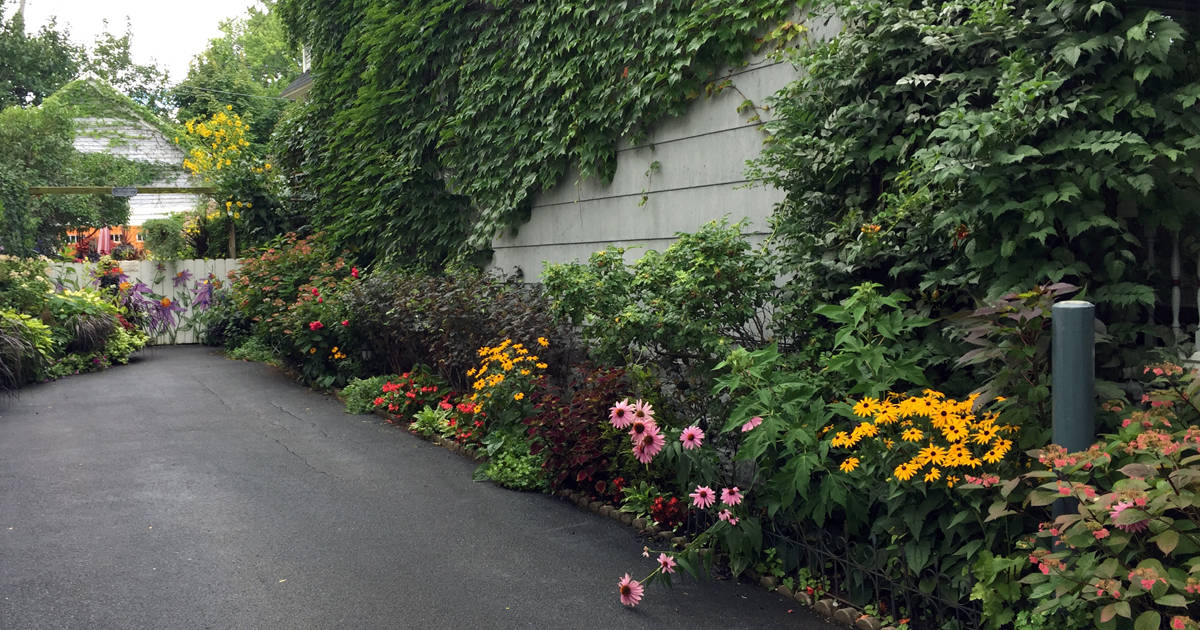Unknown Facts About Hilton Head Landscapes
Wiki Article
The Only Guide for Hilton Head Landscapes
Table of ContentsHilton Head Landscapes Fundamentals ExplainedThe Main Principles Of Hilton Head Landscapes Some Known Incorrect Statements About Hilton Head Landscapes Not known Incorrect Statements About Hilton Head Landscapes Excitement About Hilton Head LandscapesThe Hilton Head Landscapes DiariesIndicators on Hilton Head Landscapes You Should Know
Line develops all types and patterns and can be made use of in a range of ways in the landscape. Line in the landscape is created by the side between two products, the rundown or shape of a form, or a lengthy direct feature. Lines are an effective tool for the developer due to the fact that they can be made use of to produce an unlimited range of shapes and kinds, and they manage movement of the eye and the body.

Lines in the landscape. The properties of lines figure out just how people respond to the landscape, both psychologically and physically.
The Of Hilton Head Landscapes
Curved lines develop a casual, all-natural, unwinded character that is associated much more with nature and asymmetrical balance. Curved lines move the eye at a slower pace and add secret to the area by producing surprise sights.Vertical lines in the landscape include tall, narrow plant product, such as trees, or high frameworks, such as an arbor or a bird residence on a post. Horizontal lines move the eye along the ground airplane and can make a space really feel larger. Low lines are more restrained and develop a sensation of remainder or repose.
Indicators on Hilton Head Landscapes You Need To Know
Reduced lines are created by reduced garden wall surfaces, walkways, and short bushes. Lines are utilized to draw kinds on a plan. In strategy view, they specify plant beds and hardscape locations. Lines are likewise created by the upright forms of developed features and plant material. There are 3 main line kinds that develop type in the landscape: bedlines, hardscape lines, and plant lines.Bedlines connect plant product to your house and hardscape since the eye complies with the line, moving the look via the landscape. Hardscape lines are produced by the side of the hardscape, which delineates the constructed structure. Line can additionally be created by long and slim materials, such as a fence or wall surface.
Our Hilton Head Landscapes Diaries
Type is discovered in both hardscape and plants, and it is generally the dominant visual element that spatially arranges the landscape and usually determines the design of the garden. The kind of frameworks, plant beds, and yard accessories also identifies the general type motif of the yard. Official, geometric kinds consist of circles, squares, and polygons.Plants develop kind in the yard with their describes or silhouettes, however form can also be defined by a space or negative area between plants - landscape design hilton head (https://h1tnhdlndscps.carrd.co). Circles can be complete circles, or they can be separated right into fifty percent circles or circle segments and combined with lines to create arcs and tangents
Facts About Hilton Head Landscapes Uncovered
Circles are a strong layout form due to the fact that the eye is always attracted to the center, which can be used to stress a focal point or attach other types. Round forms in hardscape and yard panels.The square form can additionally be fractional and used repetitively to create a grid pattern. Unlike circles, squares are more powerful on the sides, which can be lined up or overlapped to develop distinct patterns and even more intricate kinds.
Twisting lines frequently simulate the all-natural course of rivers or streams and can be referred to as smooth lines with deeply bent undulations. Meandering lines (Figure 3) function well for paths, plant bedlines, and completely dry stream beds. Meandering lines can include passion and mystery to a garden by leading audiences around corners to uncover new views and areas.
A Biased View of Hilton Head Landscapes

Number 5. Fragmented edges: stepping stones in path. Kind is one of the most long-lasting high quality of a plant (landscape design hilton head). https://canvas.instructure.com/eportfolios/3001127/Home/Transform_Your_Yard_with_Hilton_Head_Landscapers. Typical plant types are well established and standardized, as form is one of the most regular and well-known characteristic of plants. Form can additionally be produced with the massing learn the facts here now of plants, where the overall mass develops a different type than an individual plant.
A very contrasting form has to be made use of with careone or 2 work well as a focal factor, but way too many develop turmoil. Natural plant types, as opposed to over-trimmed forms, should establish the mass of the composition. The importance of total type is more or much less reliant on the seeing perspectivethe type of a tree can show up fairly different to an individual standing under the cover versus watching the tree from a range in an open area.
The Only Guide to Hilton Head Landscapes
Plant forms likewise produce and define the space or open rooms in between the plants, producing either convex or scooped kinds in deep spaces. High-arching tree branches generally create a concave open area under the branches, and a rounded cover with reduced branches loads the room to create a convex form outdoors area under the tree.
Report this wiki page